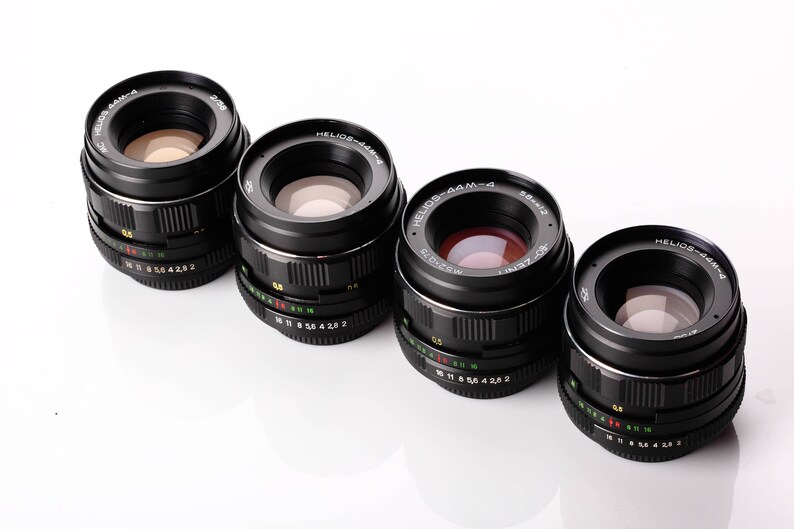

However, it was really the postwar version of the lens that really set the stage for the success of the lens. All of the optical calculations were done by hand by teams of optical technicians. It was the standard lens on the famous Kine Night-Exakta by Ihagee, the most technically advanced 35mm camera made prior to World War II.Ĭreating such a fast lens prior to WWII was one of the greatest feats in the history of optics, since it was designed and built without the use of computers. In 1927, the Biotar lens was released as a 50mm f/1.4 cinematography lens, and as 58mm f/2 version for 35mm cameras on the 19th of October, 1936. For those of you interested in lens history I recommend reading Ilya Volkov’s article Who is the father of all fast 50mm lenses? Planar vs Opic lens evolution. While Zeiss likes to claim that they were the originator of this improved Double Gauss design, there is evidence that the Biotar was based upon the Taylor, Taylor & Hobson Ltd. Virtually all of today’s fast lenses with a medium field angle (50-100mm focal length on 35mm cameras) are Double Gauss designs, like the Biotar. Furthermore, the two outer collecting lenses are each of a larger diameter than the two inner lens pairs. The asymmetry means that the front three-part lens group was overall larger than the group behind the diaphragm. These Double Gauss lenses attempted to improve on the Planar design from 1896 by abandoning the strict symmetry approach for the radii of curvature of the surfaces and the refractive indices of the glass materials, and therefore achieved additional correction parameters. Willy Walter Merté for Carl Zeiss, shortly after these earlier lenses, and all three lenses used a similar formula they were six element lenses with asymmetrical outer elements, a variant of the Double Gauss design for higher performance and increased field correction and speed. The Biotar was developed by the famous lens designer Dr. Taylor, Taylor & Hobson in the United Kingdom first developed their Panchro series, and Schneider-Krueznach independently developed their Xenon lens formula. This ancestry stretches as far back as the 1920s, a time when several lens manufacturers were attempting to improve the Carl Zeiss Planar design that originally debuted in 1896. Thank you very much for reading this far folks.Like many lenses, the Biotar 58mm has a long genealogy. They’re different again, but I’m yet to get a few images I’m pleased with. Soon it will be with a MIR1 front element reversed.
#HELIOS LENS FLOWERS DRIVER#
Don’t for one minute think that it is a difficult task, I spent longer looking for a screw driver than I spent reversing the element.
#HELIOS LENS FLOWERS HOW TO#
If you want to have a go yourself, there are a few videos on YouTube on how to reverse the element, but I can vouch for this video by John Gravett. I really do hope that something that you’ve seen may make you think that you could make use of this lens. I wasn’t about to throw the camera away so there we go.Īll images were with the Helios attached to my Fuji X-T 20. Strangely enough, it is because of this lens and the other vintage lenses I bought that I became interested in analogue, it was cheaper to buy the lens with the camera attached. I know it’s not to everyone’s taste, but I’m hoping to convince people it’s a fun and addictive pastime that runs alongside photography.

I do still love to get sharp landscape images, non of that enthusiasm has diminished in any way, I just so appreciate the carefree abandon of this type of shooting. The swirl in the background, the lack of sharp focus, even the flare that is sometimes captured, all appeal and hold my attention, making flowers a very obliging subject.

I cannot fully explain what it is I find so magical about this lens. I do love flowers and plants so the subject (s) were in the garden waiting for me, convenient as mobility isn’t my strongest asset. It took far longer worrying about it than it took to do it. Then it was time to flip the front element. Onto FeaBay I did go, and shortly I was awaiting a M42 to Fuji adapter and a Helios 44-2 lens. It basically kick started my obsession with the Helios. This was the first image I thought was what I wanted. I was told about reversing the front element of a Helios 44-2, and pointing the lens in the right direction. I asked the person who posted this image how it was achieved, and I had a reply immediately. It was a very fortunate sighting as I’m not a big fan of twitter, I am however a big fan of serendipity. A couple of years ago I happened to see an image on Twitter that completely stopped me in my tracks.


 0 kommentar(er)
0 kommentar(er)
